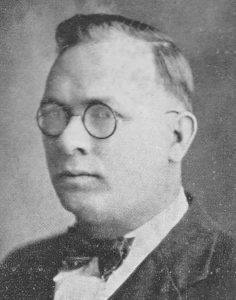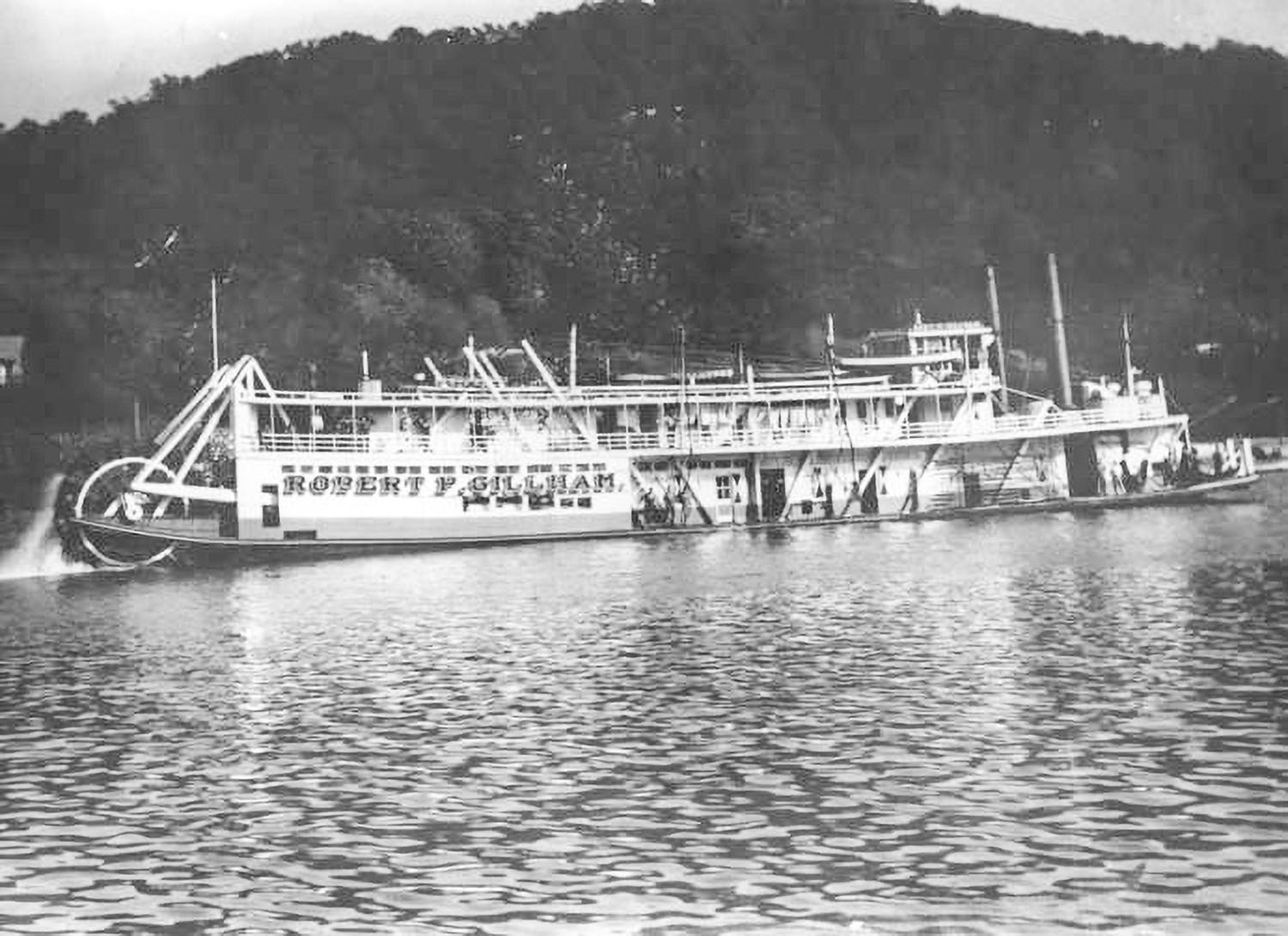A lead story on the local TV news several days ago dealt with a fire at a historic house at Gallipolis, Ohio. The video reports gave images of a red brick house that stands facing the Ohio River a short distance below the park at the Gallipolis city front. This house, purportedly built in the late 1800s, was once home to Capt. Charles M. Young. Capt. Young was something of a legend on the Kanawha and upper Ohio rivers even though during his career of some 50 years he worked for only one company, which had multiple names and ownership.

A brief biography for Young was included in “Who’s Who on the Ohio and Tributaries” within Ethel Leahy’s Ohio River Anthology published in 1931. It says that he was born in Pliny, Putnam County, W.Va., in 1891. Pliny is on the left bank of the Kanawha River, near Mile 22 and between old locks 9 and 10. In the late 1970s, this writer had the pleasure of working with Capt. G. Ed Young, a much younger brother to Capt. Charles. Ed told me that their father had been a lockman at the original Kanawha River locks, and that he himself was born at old Lock 11 while his dad worked there.
Charles Young began his river career as a cabin boy in 1908 aboard the Campbells Creek Coal Company steam sternwheel towboat Robert P. Gillham (Way’s T2182), beginning an association with the boat that would last more than 30 years. The Gillham was often referred to as “the pride of the Kanawha River.” It was built at Parkersburg, W.Va., in 1901 with a wood hull that was 149.5 by 31.5 feet. It had the first condensing engines of any boat on the Kanawha, 14’s, 24’s with 7-foot stroke. It was named in honor of Col. Robert P. Gillham, who had started in the coal business at an early age and was a principal in the Campbells Creek firm. He died at age 81 in 1932.
The Robt. P. Gillham (as the name appeared on the stern bulkhead) ran from the Kanawha to Cincinnati and Louisville and earned a dubious nickname from the deck crew, who referred to it as the “Rob’em, Starve’em, Kill’em.” It carried a three-chime whistle that was said to send thrills and chills up the spines of natives along the Kanawha and upper Ohio and was beloved by rivermen. I have had river veterans such as the late Capt. Charles H. Stone relate how the boat would start blowing the beautiful whistle well below the mouth of the Kanawha River at Point Pleasant and continue blowing until it had left the Ohio and was in the smaller stream.
Charles M. Young worked his way up to being a licensed mate at age 21, and later he became a steersman and pilot. While he did work on other boats at times, he spent a lot of time on the Gillham. Campbells Creek combined with the Hatfield coal interests in 1925, and the Gillham was renamed Henry C. Yeiser Jr. (T1093) Capt. Charles M. Young was named the master of the Yeiser, and his brother Ed, fresh with a new license, was pilot. Capt. Charles had sons that he named after steamboats he had worked on: Charles Lane Young, named for the D.T. Lane (T0550) and Dana Young, named for the Eugene Dana Smith (T0762). Charles Lane would join his dad on the Yeiser as pilot in 1933, and Dana would do the same in 1938.
In June 1936, the Yeiser, with Capt. Young in charge, took 28 loads of coal, the largest tow in Hatfield-Campbell Creek history from Point Pleasant to Cincinnati. On June 12, 1938, it took part in the dedication of the new Gallipolis Locks and Dam, which was most fitting since it had also been present as the Gillham in 1912 when Lock 26, just above and replaced by Gallipolis, had been dedicated. The boat was tied off at Reed, W.Va., (now Port Amherst) above Charleston on August 15, 1940, when a severe flash flood occurred on the Kanawha. A loose barge struck the landing and sent the Yeiser, J.F. Butts, shop barge O.K. No. 5 and some other equipment drifting downstream. The Henry C. Yeiser Jr. caught on a pier of the C&O Bridge, about Mile 56.5 Kanawha River. The O.K. No. 5 struck the boat at the head, and both vessels then sank, with the Yeiser virtually disintegrating as it went down.
As stated in Way’s Steam Towboat Directory, “the famed Gillham whistle, which many Kanawha boatmen still hear in their dreams, was lost that day.”
Capt. Charles Young went on to serve as master on boats of Hatfield Campbell Creek Coal Company and the subsidiary Ohio & Kanawha Transportation Company, including the Ellen Hatfield (T0725) and J.T. Hatfield (T1307). In 1951, the Hatfield interests were absorbed into Amherst Coal and operated under Amherst Barge Company. That same year, Amherst purchased the steam sternwheel Jason (T1345) from Union Barge Line, renaming it Herbert E. Jones (T1100). This would be the last boat that Capt. Charles Young would command, retiring in the late 1950s. His brother Ed once told me “Charlie didn’t like propeller boats; said they steer too fast.”
An article in the March 1973 S&D Reflector said that in September 1972, some divers had been exploring the area where the Yeiser sank. Boilers and other pieces of wreckage had been discovered. They found and brought to the surface a single barrel of a copper steam whistle. Thinking it was part of the “Gillham whistle,” they took it to Capt. Young at Gallipolis for identification. He quickly identified it as part of the D.T. Lane whistle, not part of the iron whistle of the Yeiser. Sure enough, the letters DTL were found stamped into it. Capt. Young told them that the Lane had been dismantled in 1937, and the whistle had been stored aboard the O.K. No. 5 that sank when the Yeiser did.
I had met Capt. Charles Young at Sons & Daughters of Pioneer Rivermen meetings when I was in high school. While I was working with Capt. Ed Young, we would blow the whistle near Capt. Charlie’s house, and he would wave a white handkerchief at the front door. He passed away in 1978. The news station reported that the current owners of his former home intend to rebuild it.
Caption for top photo: The Str. Robert P. Gillham. (David Smith collection)
Capt. David Smith can be contacted at davidsmith1955obc@gmail.com.



